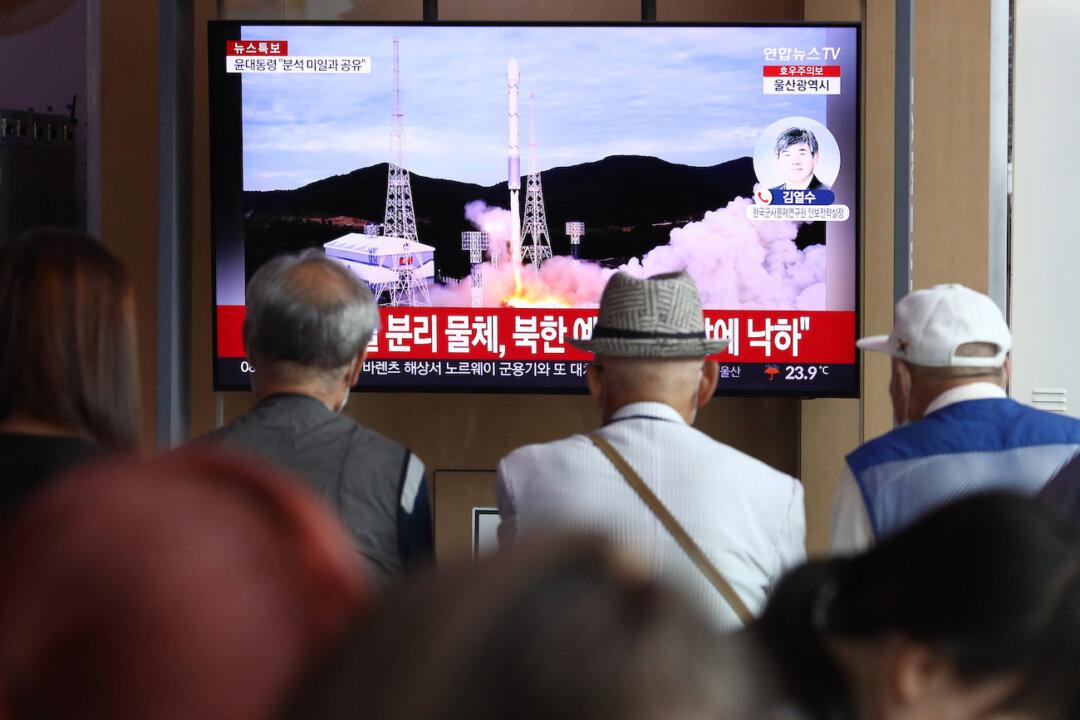Pyongyang has failed for a second time to launch a spy satellite into orbit, according to an Aug. 24 North Korean state media report.
“The flights of the first and second stages of the rocket were normal, but the launch failed due to an error in the emergency blasting system during the third-stage flight,” the Korean Central News Agency (KCNA), the regime’s mouthpiece, said of the launch.




